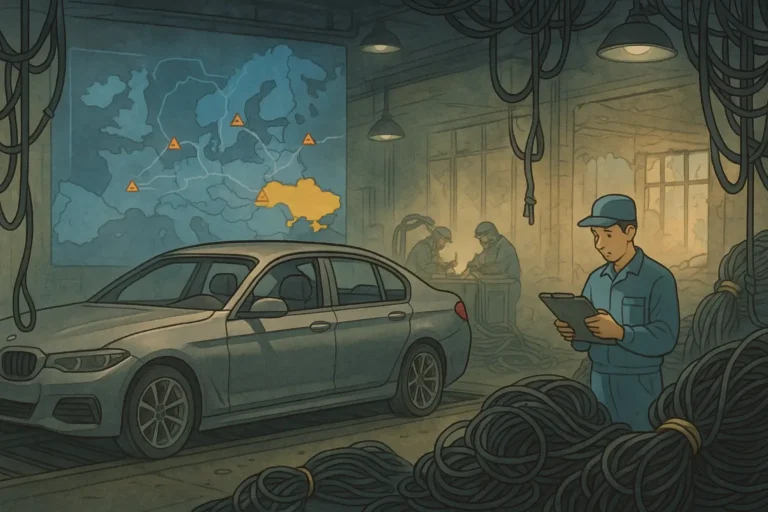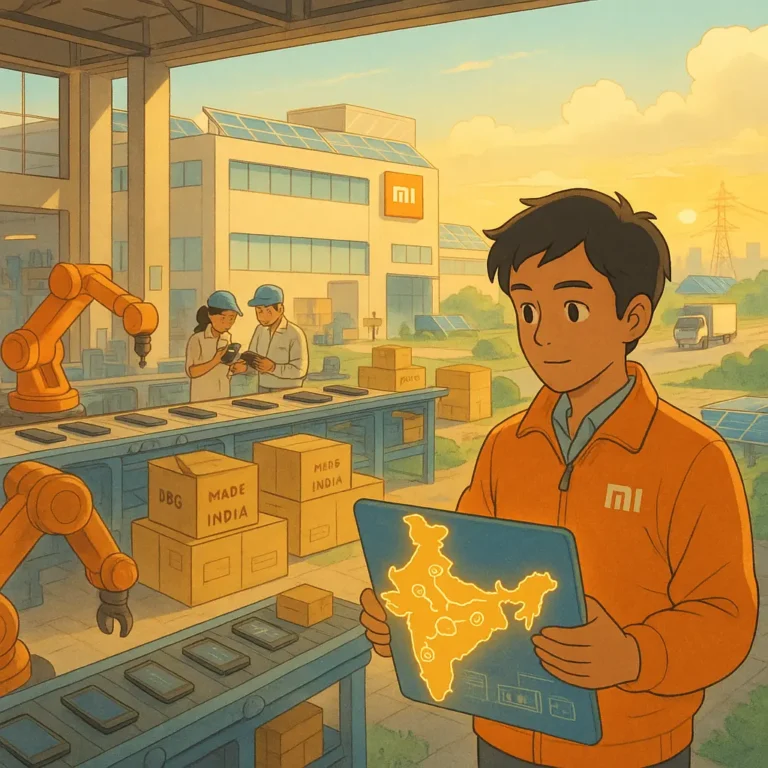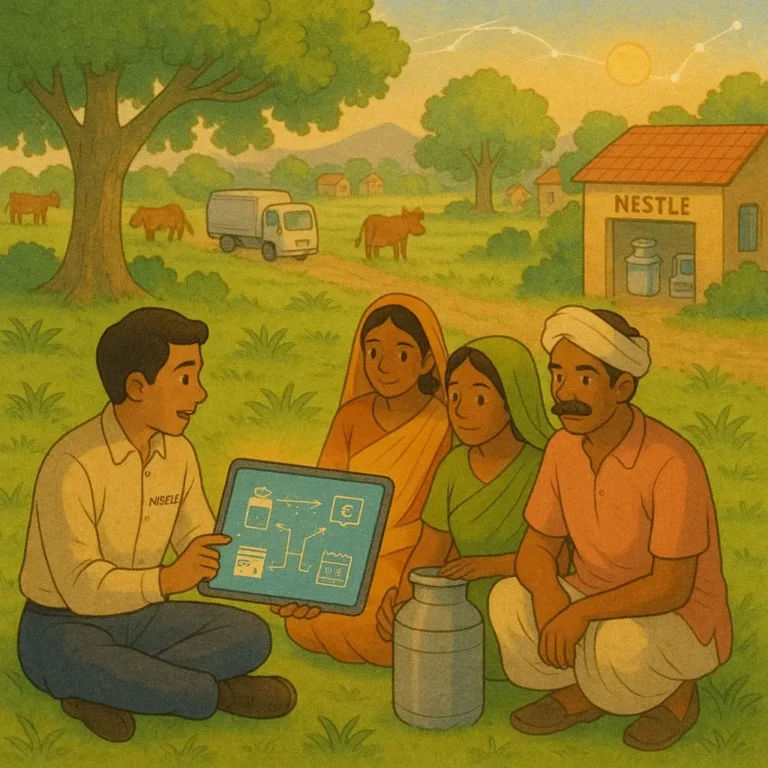
Mcdonald and Yum Brands
In July 2014, a shocking food safety scandal hit McDonald’s and Yum Brands (KFC/Pizza Hut) in China. The reason was poor supplier auditing and quality control. But why did it happen?
Article Brief & Key Nuggets:
- Trusting a long-time supplier without surprise checks hurt McDonald’s and Yum Brands in China.
- The Shanghai Husi Food scandal revealed that expired meat was being mixed into new batches.
- Audit systems failed because they were predictable, staged, and built on the assumption of compliance.
- Sales plummeted, trust eroded, and both brands were compelled to overhaul their supplier control.
- African supply chains can avoid this by implementing transparent checks, training local suppliers, and treating trust as something to prove, rather than assume.
How Trusting a ‘Safe’ Supplier Brought Down Two Global Brands in China
The fast-food industry places too much trust in its reputation. Supply chains are only as safe as their weakest, least-watched link.
McDonald’s and Yum Brands’ supply chain learned this in 2014 when their trusted meat supplier in China, Shanghai Husi Food, was caught using expired meat in food served at KFC, Pizza Hut, and McDonald’s outlets.
This scandal became one of the most damaging food safety scandals in China’s modern retail history. But it didn’t start with fraud. It started with trust. McDonald’s and Yum had worked with OSI Group (the parent company of Shanghai Husi) for decades.
OSI was global. It had operated in China since the 1990s. And McDonald’s thought the name meant safety. KFC and Yum Brands believed audits were enough. Neither thought their own supplier would fake its own inspections.
That assumption broke their businesses.
Read more: Starbucks’ Ethically Sourced Coffee: Behind The Scenes.
Why the McDonald’s & Yum Brands China Scandal Happened
Shanghai Husi Food looked good on paper. Owned by OSI, a U.S.-based supplier with nearly a century of experience in the food business, it supplied meats across China and beyond.
McDonald’s began working with OSI in China in 1992. Yum Brands followed years later. Both companies sought a reliable supply from a foreign-owned factory that adhered to U.S. safety standards.
Husi’s plant passed official audits. Some were done by government regulators, others by third-party auditors. But the checks were announced in advance, so workers and managers cleaned up before inspectors arrived.
Expired meat, often moldy, was stacked on the floor one day and gone the next. The plant had a routine. And it passed these inspections until it didn’t. An undercover reporter from Dragon TV joined the plant as a worker.
He filmed expired beef, some seven months old, being mixed with fresh meat and packed into nuggets and patties. The plant manager said it didn’t matter. “Even if it’s expired, eating it won’t kill anybody.” That footage aired nationwide in July 2014.
What had slipped past audits was now shown to every customer on national TV.
But Why Did Supplier Auditing and Quality Control Fail
The entire system of checks and supplier auditing was broken. McDonald’s and Yum Brands’ supply chain didn’t see it because their system wasn’t set up to catch it.
Here’s where it went wrong:
- Too many suppliers, too little oversight: Yum had over 650 suppliers in China. Not all could be checked often.
- No on-site presence: There were no permanent company inspectors at the plant. No cameras. No live logs.
- Audits were staged: Most inspections were pre-scheduled. Husi prepared fake routines and sanitized operations just for those days.
- Outsourcing of accountability: The brands assumed OSI would self-police because it was an American company. They handed over food safety and walked away.
Shanghai Husi turned these gaps into a system. The company regularly used expired meat, repackaged spoiled products, and passed audits by hiding the issues. Until one person filmed it all.
Read more: Walmart’s Project Gigaton: The Story and Lessons Behind it.
What Happened When the McDonald’s and Yum Brands’ China Meat Scandal Broke
The exposé caused panic. McDonald’s and Yum stopped buying meat from Husi immediately. Regulators shut the plant. Executives from Husi were arrested, and ten were later jailed.
Yum, which gets 60% of its revenue from China, saw its same-store sales drop 14% the next quarter. McDonald’s Asia unit fell 7.3% in July and 14.5% in August 2014. Yum’s share price dropped by about 10%.
McDonald’s Japan had to stop selling Chicken McNuggets temporarily due to supply issues.
Restaurants removed products from their menus, and customers left in anger. They no longer trusted the safety of the food, because the brands had trusted the wrong supplier. This was the second food scare in two years.
In 2012, Chinese state media had exposed poultry suppliers to KFC and McDonald’s for using banned antibiotics. Yum’s sales had dropped 40% then. It took two years to recover. The 2014 scandal destroyed that progress in weeks.
What McDonald’s and Yum Brands’ Supply Chain Did Next
Both companies realized they could not outsource trust. They had to build new systems, fast.
McDonald’s: Audit, monitor, and verify
- Supplier audits increased dramatically.
- Half of them were made unannounced.
- Installed 24/7 video monitoring at meat plants.
- Placed quality control staff on-site full-time.
- Establish whistleblower hotlines to report food safety violations.
- Reviewed its entire relationship with OSI. Eventually, supply resumed from OSI plants that had passed full checks.
McDonald’s food supply chain now uses technology and people to see behind the scenes, not just the showroom floor.
Yum Brands: Cut and rebuild
- Immediately ended all business with OSI in China.
- Terminated all contracts with OSI globally.
- Communicated a zero-tolerance policy to all suppliers.
- Rebuilt its supply chain with trusted local and international partners.
Yum didn’t just replace Husi—it sent a warning to every other supplier.
Both brands invested in marketing and consumer outreach to rebuild trust. But regaining that trust cost millions and years.
Read more: The Story and Lessons Behind Bolt Food’s Exit From Nigeria.
Lessons for Other Food Supply Chains
Supply chain trust is not a badge of honor. It’s a process. Here’s what food logistics and supply chain professionals can learn from the expired meat scandal:
1. Trust Needs Proof
A long-term partner can still fail. Therefore, suppliers must be continuously verified. More surprise audits should be the norm. Video surveillance, digital temperature logs, and independent sampling reduce the chance of fakes.
2. Audits Must Reflect Real Life
Checklist inspections don’t work if the answers are rehearsed. Real quality control comes from seeing the factory when no one’s expecting it. Use live data and random visits.
3. Spread Your Risk
No supplier is too big to fail. Having backup vendors is a non-negotiable these days. Keep safety stock from multiple locations. One compromised plant should never bring down an entire region’s food safety.
4. Culture Eats Protocols
If your supplier’s managers believe expired meat is “no big deal,” no SOP will stop them. Train suppliers in ethics. Make food safety a shared mission, not a checklist.
5. Crisis Plans Must be Ready
Have a media response plan, product recall protocol, and backup supply chain in place. Delays in a food safety scandal multiply the damage.
How African Food Supply Chains Can Apply These Lessons
Food safety risks are real in Africa’s growing consumer markets. But those building retail and restaurant supply chains today can avoid past mistakes.
1. Start With Visibility
Know your supplier’s daily operations. Walk the floor unannounced. Use mobile audits and cloud-based checks. Make surprise inspections routine, not rare.
2. Don’t Cut Corners for Cost
Pressure to deliver cheap food fast will push some suppliers to cheat. Build audit costs into your supplier contracts. Don’t reward the lowest bidder without asking how they meet standards.
3. Train for Transparency
Create an environment where suppliers report risks, not hide them. Train their staff on basic hygiene and ethics. Create incentives for compliance, not cover-up.
4. Build Local Trust Through Consistency
African consumers trust brands that prove themselves. If a company delivers clean food every day for five years, it wins. One food scare, and that trust disappears.
5. Use Tech to Track Trust
Simple tools, such as barcodes, timestamps, and remote video feeds, can help close gaps in oversight. If your logistics chain can’t verify what’s happening at every node, it’s not safe.
Treat Every Supplier Like They Might Fail—Because One Will
McDonald’s and Yum Brands didn’t think their biggest China food safety scandal would come from a U.S.-owned supplier with 20 years in the market. But that’s what happened. The cost was measured in billions of Yuan, broken trust, and prison time for some.
Food safety is never just about the product. It’s about the people, systems, and attention behind every delivery.
Africa’s food supply chains are still in development, which is why now is the time to build them effectively. Surprise your suppliers. Watch their work. Reward honesty. And never forget that every menu item starts in a place most customers never see.

Obinabo Tochukwu Tabansi is a supply chain digital writer (Content writer & Ghostwriter) helping professionals and business owners across Africa learn from real-world supply chain wins and setbacks and apply proven strategies to their own operations. He also crafts social content for logistics and supply chain companies, turning their solutions and insights into engaging posts that drive visibility and trust.







